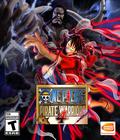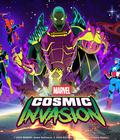This is actually the second review I've written for Project Aftermath. I was all set to flame the game for its obtuse difficulty and incomplete tutorial based on my inability to survive missions or earn GOOP after a certain point, let alone earn higher-level medals. Other players on the leaderboards managed ridiculously high scores, something I couldn't fathom.
Then it clicked: Let your tactical deployments do everything for you. Be it turrets or my personal fave, the tough veteran Containment Units, they cost nothing to acquire and don't penalize you if they get killed or destroyed. All they cost is time and patience; the game offers a time to completion bonus that I never seemed to earn even when rushing through levels, so there was no big loss there. I was under the impression that these deployments cost GOOP, the currency of the game and ultimate determiner of your final score. Everything else costs GOOP, so why shouldn't they? They don't, and they are the key to victory.
The problem is that once you realize this fact, what minimal amount of strategy the game might have required goes right out the window. Instead of poring over stats and advantages of different weapons, armor, field effects and augmentation load-outs, all you need to do is scan the map for enemies (there is no fog of war to speak of), pick drop teams and turrets of a different color than your enemies, and go to war.
See, if an enemy's armor is blue, blue (energy) weapons and effects have reduced effectiveness against them. However, red (physical), green (biological, usually damage over time), and yellow (Morphid effects) should have a roughly equivalent effect against said enemy. When groups gain resistance against two colors combined about halfway through the single-player-only campaign, that complicates things slightly, but not by much. In fact, resistance to either color is reduced, opening them up to more damage — even from types of weapons against which they're somewhat protected.
One bug that appeared mid-mission after alt-tabbing out and back into the game (only happened once despite several alt-tabs) made everybody in the immediate area — friend and foe alike — invincible, bringing mission progress to a halt. The only fix seemed to be to wander away and pick a fight elsewhere, which reinstated damage. Frustratingly, if Containment Teams are engaged in a fight — or even aggro range of enemies — they won't move if you relocate the lamp post they rally around. You also can't set drop teams to offensive/defensive postures, though you can for characters and their attached troops.
The real battle in the game is between you and the controls. For one, rather than using left-click to select and right-click to interact/attack, left-clicking does both. The problem with this is that, in the heat of battle, your frantic clicking can deselect some groups and select ones you don't want. This is bad because of extreme resurrection costs of main characters, and on more than one occasion, I've inadvertently sent mission-critical characters, primarily engineers needed to open special gates or hijack/sabotage power stations, into harm's way, even though they can't be resurrected. The genre standard of box-selecting multiple groups or units and grouping them together is replaced by holding Control, left-clicking, and dragging directly across units to "paint" them, which not only feels less precise, it also only selects main characters, not support units. Containment units, for example, rally around a lamppost that has to be picked up and positioned elsewhere to get them to move; the precision clicking required to grab the post sometimes causes you to accidentally move other units that aren't bound by this stupid schizophrenic movement scheme, unless you actively deselect everyone else first. It's tedious and unnecessary, to say the least.
What's more, if your character is standing between your view and what you want to interact with, the game isn't smart enough to interpret that. For example, if you move close to a switch but don't click exactly on it, you have to move your unit away to clear your view of said switch, and then click on it again to use. The same thing can happen in combat, especially melee. Since your guys can sometimes be too brain-dead to return fire — or engage with the rest of the group because they're standing a millimeter outside the aggro range — you try to click on the enemies, and instead end up clicking yourself and de-selecting everyone else in your group.
To cause all this frustration, you'd think the right mouse button — normally used to interact with enemies and structures in games such as this — must have been reserved for something much more important, right? All it does is grab the terrain so you can scroll your view around. I initially gave them credit for having both cursor key and WASD configs to move the camera (though no keys can be reconfigured), but now that I know the right mouse button was completely wasted, it's aggravating.
What's your impetus to put up with these numerous niggling issues? A thin story line about quelling a rebellious genetically modified off-shoot of the human race, told largely between missions via comic book-style storyboards. It's nothing to write home about, though you occasionally have to make morally ambiguous choices; how they ultimately affect the progression and outcome of the game seems minimal. You may get a different bit of dialogue, but that's about it. There are 10 missions, no branching story line and every mission is entirely linear, with basic objectives stringing you from one point to the next. While that isn't entirely uncommon for the genre, the complete lack of skirmish and multiplayer modes shines a brighter light on the limitations of the single-player campaign. Of course, the lack of base-building or planning, army construction or unit variety, population caps, resource gathering or dynamic gameplay eliminate any need for those modes anyway. The developers call it an "arcade RTS," which seems like the very definition of an oxymoron.
Without skirmish or multiplayer, replayability is limited to whether you want to improve upon your mission scores to rise on the leaderboards, or if you feel compelled to earn all 92 of the achievements under Service Record. For example, there are specific challenges like kill 25 enemies in five seconds, collect all pick-ups in a mission, or resurrect a hero 50 times. If neither of those interests you, you're looking at a title you can see the entirety of in a matter of a few hours, with little reason to return.
The visuals aren't terribly taxing and can be run on modest systems. There are no adjustments to be made in Options, so it will either run or it won't. Thankfully, the system requirements are pretty low, offering 30-100 frames per second on mid- to high-range Geforce 7000 cards (I used a 7400 and 7950GT, respectively). The base game (v1.05) only seems to support your current Windows resolution, and windowed mode doesn't work. If you let the auto-updater run, v1.20 fixes these issues, though resolution can still only evidently go down to 1024x768, despite the mediocre visuals.
It's a light install, 343MB initially and 400MB with all patches to date. It runs without the disc, can be dragged and dropped from drive to drive without any problems running (though you need to re-input the CD key), and for those interested, your campaign save file is "p.dat" in the root game folder, if you want to back it up.
Is Project Aftermath fun? Kind of, if you like an RTS with absolutely none of the "S." It's essentially a cakewalk once you figure out the elements of the game that aren't entirely explained in the tutorial (I have yet to figure out what the beacons do). The story isn't all that compelling, nor is the gameplay exciting for RTS players, and it's perhaps too cumbersome for third-person action fans. It's not clear who Project Aftermath is supposed to appeal to, which makes it difficult to recommend over the numerous better, more polished options in either category.
Score: 6.5/10
More articles about Project Aftermath






































